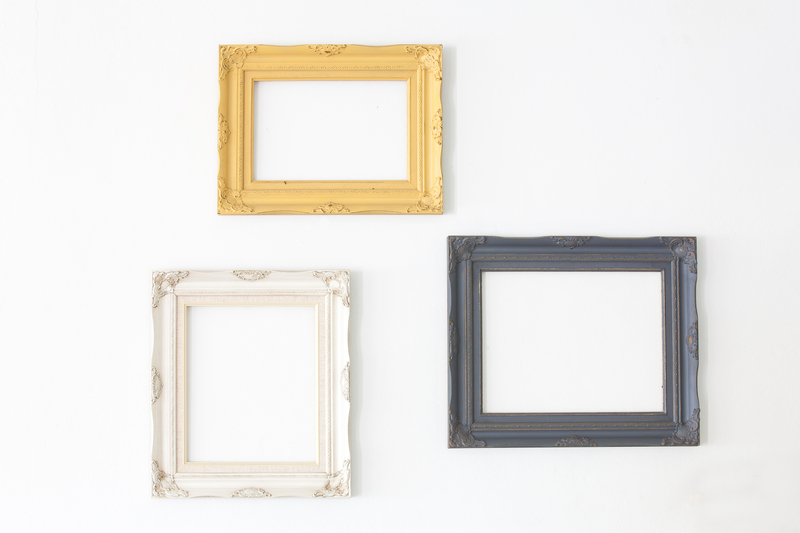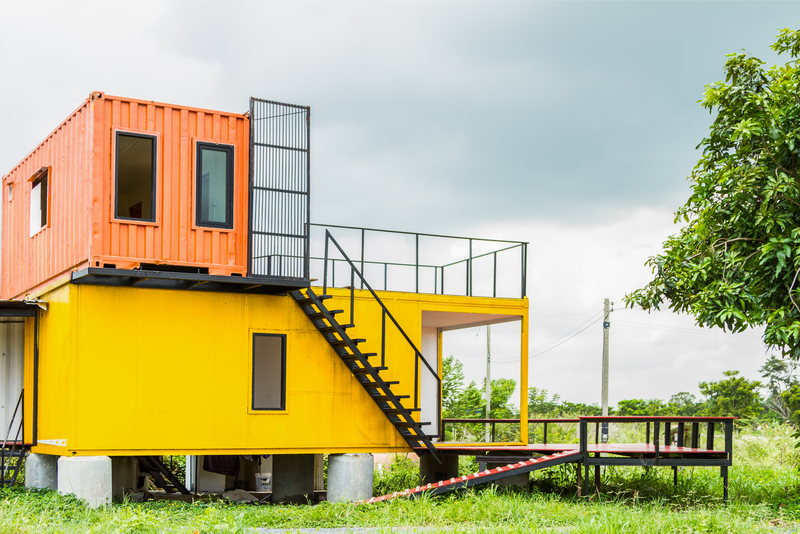Clear Space, Clear Mind: The Minimalist Living Revolution
Minimalism is far more than a design trend or fleeting lifestyle fad; it's a holistic approach that inspires people globally to ask: What truly matters in life? By embracing minimalist living, many rediscover a sense of freedom, purpose, and peace. In this comprehensive guide, we'll explore how decluttered spaces can lead to clearer minds, and why the Minimalist Living Revolution is transforming lives, homes, and communities worldwide.
What is Minimalist Living?
Minimalist living centers around intentionally owning fewer possessions and designing environments that prioritize function, serenity, and meaningfulness. Instead of seeking contentment through accumulation, minimalists pursue fulfillment through simplicity.
For many, clearing physical clutter leads directly to a clearer mental space. The very act of removing excess creates room for clarity, creativity, and calm.
Principles of Minimalist Living
- Intentionality: Choosing possessions and activities that add true value
- Simplicity: Streamlining surroundings for efficiency and calm
- Functionality: Prioritizing usefulness over aesthetics or trends
- Freedom: Letting go of societal pressures for more "stuff"
- Mindfulness: Cultivating awareness of needs versus wants

Why Clear Space Means a Clear Mind
There is a growing body of research connecting organized, decluttered spaces to reduced stress, improved mental health, and increased productivity. When our environments are clutter-free, our minds are less distracted, allowing us to focus, create, and relax.
Benefits of Decluttering
- Reduced Anxiety and Stress: Clutter has been linked to elevated cortisol, the stress hormone.
- Enhanced Focus: Less visual noise equals improved concentration and creativity.
- Better Sleep: Minimal bedrooms foster tranquility and deeper rest.
- Improved Decision-Making: Fewer choices reduce decision fatigue.
- Greater Satisfaction: Owning less often brings a sense of abundance and contentment.
Scientific Proof: Clutter and Well-being
A UCLA study observed that cluttered homes resulted in higher levels of stress hormones, especially in women. Other research shows that a chaotic environment can undermine productivity and self-discipline. Minimalist living advocates argue that as we remove physical excess, we invite in psychological clarity.
The Minimalist Living Revolution: A Global Movement
Minimalist living isn't just about organizing your closet or getting rid of old books; it's a grassroots revolution advocating for intentional, value-driven living. Across continents, people are rejecting rampant consumerism and clinging instead to what's truly necessary. Social media platforms, documentaries like Minimalism: A Documentary About the Important Things, and popular books have fueled this movement, inspiring millions to simplify.
Key Drivers Behind the Minimalist Living Revolution
- Environmental Concerns: Less consumption leads to less waste and a smaller carbon footprint.
- Financial Freedom: Spending less means saving more and working less.
- Mental Health: As outlined, a tidy environment fosters clearer thinking.
- Desire for Authenticity: People seek genuine experiences over material possessions.
- Response to Information Overload: Digital decluttering is now just as vital as physical tidiness.
How to Embrace Minimalist Living: Practical Steps
Adopting a minimalist lifestyle doesn't have to be radical or abrupt. It's a continuous journey of evaluating and re-evaluating what brings true value. Here's how to get started:
1. Start with a Vision
Define what minimalism means to you. Are you seeking more time, less stress, or a smaller ecological impact? Envision your ideal clear space and how it would transform your mind and life.
2. Declutter Gradually
- One Room at a Time: Tackle the easiest space first (maybe your bathroom or desk).
- Sort Belongings: Categorize items into keep, donate, recycle, or discard.
- Ask Yourself: "Does this add genuine value to my life?"
3. Mindful Consumption
- Pause Before Purchases: Avoid impulse buying; consider long-term usefulness.
- Quality Over Quantity: Invest in fewer, better-made items that last.
4. Organize with Purpose
Everything you own should have a designated space; store items so they're easily accessible, and let negative space be just as valuable as filled space. Use containers and labels to maintain order.
5. Digitally Declutter
- Inbox Zero: Regularly archive or delete old emails.
- Simplify Files: Organize documents and photos in logical folders; delete duplicates.
- Unsubscribe: Opt out of digital newsletters and notifications you no longer find meaningful.
6. Cultivate Minimalist Habits
- Schedule routine decluttering sessions.
- Practice the "one in, one out" rule for new purchases.
- Prioritize time, energy, and activities that align with your core values.
The Minimalist Home: Designing for Peace and Function
The minimalist home is characterized by open spaces, thoughtful decor, and multi-functional furniture. Yet, it's not about starkness--it's about purpose. Whether in a tiny apartment or a large house, anyone can create a calm, welcoming refuge.
Room-by-Room Minimalism
- Living Room: Choose a neutral color palette, simple furnishings, and keep surfaces clear. Display just a few meaningful objects.
- Bedroom: Prioritize comfort. Limit items on nightstands, store clothing efficiently, and use under-bed storage wisely.
- Kitchen: Clear countertops except for daily essentials. Store utensils and appliances out of sight.
- Bathroom: Keep toiletries organized. Discard products past their prime.
- Work Space: Organize cables, minimize paper, and make use of digital tools for productivity.
How Minimalist Design Feeds the Mind
Research shows that visual clarity reduces the subconscious "background noise" that taxes our minds. Minimalist interiors foster a sense of control and peace, allowing us to unwind and recharge fully.
The Minimalist Mindset: Beyond Physical Spaces
While minimizing clutter in your external environment is crucial, mental minimalism is equally transformative. This means simplifying your commitments, relationships, and digital life.
Mental Minimalism Practices
- Single-tasking: Focus on one objective at a time, avoiding multi-tasking distractions.
- Digital Detox: Take breaks from social media and focus on what truly matters.
- Boundaries: Practice saying no to activities or demands that drain your energy or add little value.
- Mindful Reflection: Regular journaling or meditation can clear internal clutter as effectively as tidying a room.
The Ripple Effect of Minimalism
As individuals cultivate a clearer space and mind, they often report:
- More fulfilling relationships
- Greater personal productivity
- Increased savings and financial stability
- Improved health and energy levels
- A sharper sense of life's true priorities
Minimalist Living Revolution: Real-Life Success Stories
From tiny home dwellers to families downsizing for simplicity, the minimalist movement is buoyed by countless real-life success stories:
- Joshua Fields Millburn & Ryan Nicodemus (The Minimalists): Two friends who left corporate lives, downsized, and now teach millions about clearer space and mental freedom.
- Marie Kondo: Author of The Life-Changing Magic of Tidying Up, who advocates for keeping only items that "spark joy."
- Leo Babauta (Zen Habits): Inspired millions with his blog discussing minimalist habits, simplicity, and mindful living.
*These examples show minimalist living is accessible and adaptable, no matter your starting point.*
Common Myths About Minimalist Living
-
Myth #1: Minimalism means living with almost nothing.
Truth: It's about ensuring everything you own serves a purpose or brings happiness. -
Myth #2: Minimalist homes are cold and boring.
Truth: Minimalist spaces can be warm, cozy, and inviting, often customized to reflect personal tastes. -
Myth #3: Minimalist living is only for singles or young people.
Truth: Families, retirees, and people of any background can benefit and participate.
Frequently Asked Questions about Minimalist Living
-
Can I be minimalist if I have kids or a big family?
Absolutely. Minimalist living with children is about teaching values, sharing community resources, and keeping toys and supplies intentional. -
Will minimalism make me happier?
While happiness is complex, many report more peace, gratitude, and joy after decluttering and simplifying. -
What about sentimental items?
Minimalist living does not require discarding all memories; keep what's meaningful, but don't let nostalgia override the benefits of an intentional space. -
How do I start the minimalist journey if I feel overwhelmed?
Begin small--perhaps with a single drawer or shelf. Consistency is more impactful than speed.

Minimalist Living in the Digital Age
In an era of digital overload, minimalism now often encompasses digital decluttering--from trimming down apps to managing screen time. Take control by:
- Simplifying device home screens to the essentials
- Deleting unused accounts and apps
- Setting app usage limits and device-free hours daily
Minimalist Living Revolution: Your Next Steps
Are you ready to clear your space and clear your mind? The journey towards minimalist living starts with one step--whether it's letting go of old clothes, turning off push notifications, or reevaluating your calendar. The benefits are far-reaching: a lighter home, a calmer mind, better focus, and more room for what you truly love.
Conclusion: Embrace the Minimalist Living Revolution
The Minimalist Living Revolution isn't just a reaction to over-consumption, but an invitation to intentional living. By reclaiming your environment and mind, you open yourself to greater freedom, creativity, and joy. A clear space is the foundation for a clear mind. This movement is for anyone, anywhere, seeking meaning in a complex world.
So, are you ready to join the minimalist revolution? Start today--because every item cleared and every distraction removed brings you closer to a clear mind and a fulfilling life.
```





